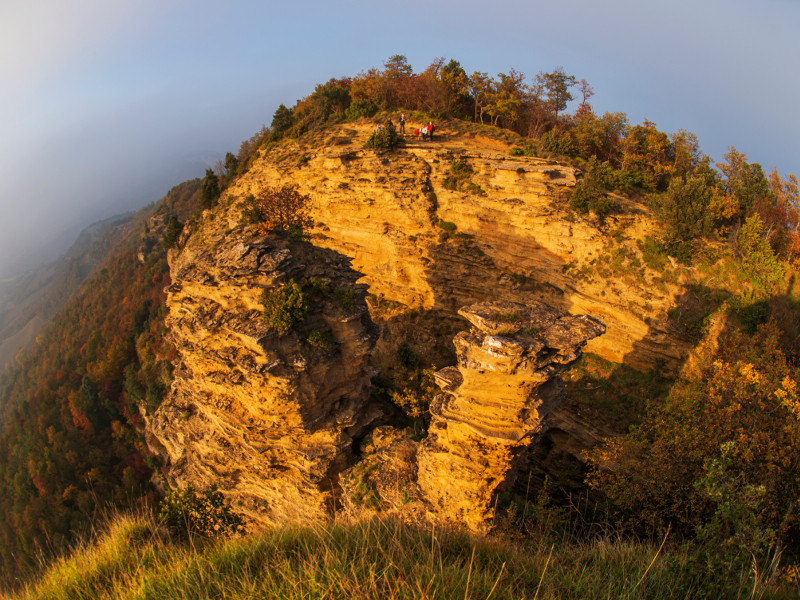Home » Nature and Territory » Riserva Naturale del Contrafforte Pliocenico » Protected Area
Geology and paleontology
The reserve's stunning sandstones are testimony to the existence of a small sea gulf during the Pliocene (5-2 million years ago), when the present-day Po Valley was still a deep offshore environment and the nearby Apennine mountain range had already largely emerged. There are numerous signs on the rocks outcropping along the Contrafforte's mountainsides that reveal their place of origin: beaches battered by the waves, where the Apennine rapids once flowed.
The Contrafforte's slender profiles, especially along the southern side, are the classic result of the erosive modeling occurring between rocks of different hardness and the overlying sandstones, which proved to be much more resistant to erosion than the clayey slopes at their base.
Atmospheric agents, especially the wind, have created unusual forms along the mountainsides, carving more quickly into the less cemented or more fractured rock sections. This is how the magnificent towers near the top of Mount Adone or along the Sadurano slopes were created. Weathering also explains how the ravines, overhanging rocks and ledges, like those of the Rocca di Badolo or at Monte del Frate, were formed. Small caves, such as the Grotta delle Fate at Mount Adone and the Grotta dei Funghi at Badolo, were created by fractures or faults in the rock.
There are many fossilized remains of organisms that inhabited the Pliocenic gulf incorporated in the rock or dissolved in the debris: mostly the shells of gastropods and bivalve mollusks, including the easily recognizable oyster shells. The fossils provide important information for the reconstruction of their living environments (climate, seabed depths, water salinity).
Trace fossils are very characteristic and common. Similar to large solidified worms, they are actually fossilized galleries that were dug out in the sediment by the organisms.
2025 © Ente di gestione per i Parchi e la Biodiversità - Emilia Orientale
Piazza XX Settembre, 1 - 40043 Marzabotto (BO)
Tel. +39 051 6701260-6254811 - Fax +39 051 6254521
E-mail protocollo@enteparchi.bo.it - PEC enteparchibo@cert.provincia.bo.it
P.IVA CF 03171551207
Codice univoco per la fatturazione elettronica: UF2KK4
E-mail protocollo@enteparchi.bo.it - PEC enteparchibo@cert.provincia.bo.it
P.IVA CF 03171551207
Codice univoco per la fatturazione elettronica: UF2KK4




